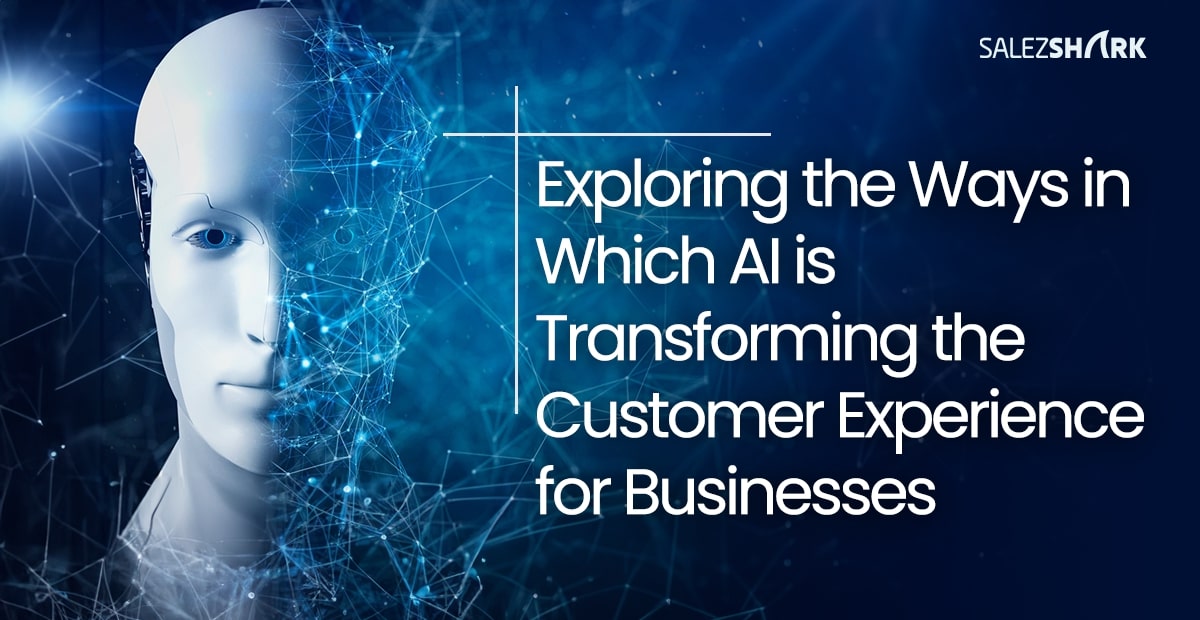When your main objective is to increase customers all the time, a knowledgeable and convenient client experience becomes a crucial advantage. It is one of the most crucial elements for every organization. Typically, your employees are juggling several duties at once. It’s difficult to pay close attention to every lead or chance when things are so chaotic.
In light of this, several businesses began to invest in automated self-service. To automate client interactions and enhance the customer experience, they are using AI.
Businesses nowadays are aware of the enormous value and return on investment that a positive customer experience can produce. Because of this, several of them are incorporating AI into different stages of the consumer journey.
Let’s examine the positive changes that AI can make to it.
4 Ways to Use AI to Redefine Customer Experience
Whether you realize it or not, artificial intelligence (AI) is a constant in our modern life. Everything from figuring out your preferences to creating recommendations based on that data is possible. However, how are businesses utilizing AI to improve the consumer experience? And how can you apply the same principles to your company? In this article, we’ll examine four ways you may use AI to reimagine the consumer experience.
1. AI-Powered Virtual Assistants for Better CX
It’s almost unbelievable how predictive analysis and customer insights can be combined with AI to improve customer experience. It allows you to automate typical searches by studying consumer behavior. Users that are knowledgeable about the product will be able to better service themselves. In fact, 83% of firms would see more engagement if they improved in-person customer service.
You may make this information easily accessible to the consumer by integrating it with knowledge base software and distributing it via an AI-powered chatbot. A knowledge base not only empowers customers but also helps organizations cut support expenses by over 30%. Through chatbots that can automate over 80% of regular enquiries, the turnaround time is shortened.
2. Curation of Email Content Automatically
Did you know that content personalization is more successful in attracting customers, according to 80% of marketers?
You can create algorithms to track user website and email browsing data with the aid of machine learning to determine the kind of content they interact with. With the help of this data, the algorithm can locate pertinent content and send the customer tailored emails.
In fact, it has been discovered that applying AI to segment and personalize email can boost click-through rates by as much as 14%. Aside from that, effective CTAs and email subject lines are created using AI. By doing this, brands have been able to improve user experience and advance customers down the sales funnel, resulting in an increase in average open rate of 7.4% and click rate of 0.4%.
3. Personalized Prediction
You must research your customers’ behavior in order to tailor your services and deliver a comprehensive and personalized experience. The fact that 71% of B2B customers are interested in utilizing AI for personalization and another 63% want to use it to discover trends is therefore not surprising.
Organizations may be able to examine user behavior and make predictions about their future behaviors via predictive personalization. Today, businesses are effectively incorporating AI into every stage of the customer journey to improve CX. Nearly 31% of marketers say they use this strategy to better understand their clients.
4. Analytics with AI to Understand Customer Behavior
There is no doubt about the power of data and analytics to inform CX. By the end of this year, it is expected that more than 40% of all data analytics will relate to a component of the customer experience.
Data and analytics are already widely used in the marketing, sales, customer service, digital commerce, and social media management departments to collect customer data. Recent big data figures show that the market for data analytics software increased by 14% in just one year, from 2018 to 2019, and that it would grow at a CAGR of 10.48% through 2027, reaching a total market value of $103 billion.
After putting intelligence into operational systems like marketing automation and CRM, firms can combine AI to provide actionable insights. Following that, businesses can use these information to improve consumer engagement. Employees may be given the tools they need to assist users in making educated decisions, improving the customer experience.
Companies may learn about the client engagement habits, identify pertinent offerings, and communicate them in real-time with the use of tools like text analytics, machine learning, and facial recognition software. Through these tiered silos of complicated data environments, AI-enabled analytics can sort, opening up new commercial options.

